We call the Korean War of 1950-53 “The Forgotten War,” because most Americans were busy buying homes and cars and refrigerators and trying to forget World War II, which had ended a few years earlier.
But much longer forgotten is a war whose 200th anniversary we’re marking this week. Not very rousingly, either, except in a few places such as Baltimore, Maryland, for reasons you’ll soon understand.
The conflict with Britain was the War of 1812, a classic misnomer, since it lasted well into 1815.
If it weren’t for three or four events from that war that show up in history textbooks, we might ignore it entirely.
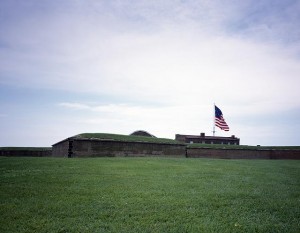
This is one War of 1812 site still standing, in Baltimore. You'll learn about it shortly. (Carol M. Highsmith)
There are precious few War of 1812 battlefields and cemeteries to explore, compared to those from the U.S. Civil War of the 1860s. But there’s a fort in Baltimore that I’ve visited that’s central to the story of that conflict. It and the waters of the Chesapeake Bay beyond its ramparts — remember that word; I’ll come back to it — are the nexus of a week of War of 1812 commemorations. Not celebrations, certainly, since most people wouldn’t know what would be worth celebrating about a war so long-ago and so obscure.
Of course, at least 618,000 Americans, from the North and South, died in the Civil War. At most, 18,000 Americans perished in the War of 1812 — four-fifths of them from disease.
Yet that conflict was as responsible for the existence of a United States of America as was the Revolutionary War that wrenched our freedom from Britain 35 or so years earlier.
That’s why, if you look hard enough in the reference books, some people consider the War of 1812 our SECOND war of independence.
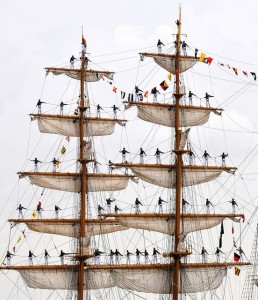
An Ecqadorian tall ship arrives in New Orleans for a War of 1812 Bicentennial ceremony. (Petty Officer 1st Class Kenneth Robinson, U.S. Navy)
Pull up a chair, cancel your application to a war college, and I’ll tell you about some subplots and tangents that made this war more interesting than you might think.
It’s a very big deal to our northern neighbors in Canada, for instance, where many ceremonies are on tap throughout the remainder of the year. That’s because Americans invaded Canadian — then British — territory over and over again during the conflict in ways that left no doubt we were bent on annexation. We probably WOULD have stayed if we’d won many battles there. We didn’t.
In Britain, the War of 1812 is a footnote, a sidebar to the larger war it was fighting at the time with the French Empire — which included parts of the old Holy Roman Empire as far away as Portugal. It was only when Emperor Napoleon abdicated the French throne in 1814, following his army’s bitter retreat from a disastrous foray into Russia, that the British could turn their attention to smiting the upstart Americans.
Britannia ruled the waves at the time, and its armies had performed well against the French, so Britain fully anticipated quick victories that would restore Britain’s errant former colonies to the empire.
It was the United States that had actually declared war, however, on June 18, 1812, over what it considered outrages to its hard-won sovereignty.
Britain had imposed harsh trade restrictions on the young nation, mostly to keep it from supplying the enemy French. That was galling enough, but the tipping point that led to war was the Brits’ impressing of American merchant sailors, especially those who had been British-born, into the Royal Navy. British warships simply swooped in and plucked able-bodied crewmen off American ships.
And the British were even busier meddling on the American mainland. They supplied weapons to Indian tribes in the Northwest Territory around the Great Lakes, just beyond the 15 existing coastal states.
Their hope was that an independent Indian confederation might blunt American migration into lands that the British hoped would be ripe for their own expansion out of Canada.
This, in turn, emboldened Americans to sally forth into lightly populated British Canada with expansionist designs of our own.
U.S. President James Madison sent a message to Congress on June 1, 1812, listing the nation’s grievances against Britain. He did not ask for a declaration of war, but in the closest such vote in American history, 59 percent of senators voting and 61 percent of voting House of Representatives members gave it to him.
Here’s one of the interesting tangents I promised:
Seven days earlier in London, an assassin — not a Frenchman but a Briton with a grievance against the Crown — had killed Prime Minister Spencer Perceval. His successor, Robert Jenkinson, Lord Liverpool, favored rapprochement with the Americans, but it took three weeks for word of this to cross the Atlantic.
By that time, the war was already on.
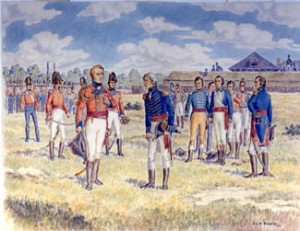
A depiction by John Wyckliffe Lowes Forster of the Americans' surrender of Detroit. (Wikipedia Commons)
Things did not go well at all for the Americans at first. After being repulsed in an attempted invasion of what is now Ontario, Canada, a motley American militia lost its own strategic outpost of Detroit on Lake Erie as well. Then the British crushed a second foray into Canada, this time north of Niagara Falls above Lake Ontario.
And Indian forces, which had set aside tribal differences to align with the British, overwhelmed a number of poorly trained and equipped U.S. forces in the deep woods of the American interior.
After awhile, too, the mighty British Navy, freed from chasing the French about, arrived and set about blockading most of America’s Atlantic coastline. Its commanders exacted tribute from coastal cities in return for not leveling them.
And one spectacular British success in particular, in August 1814, would make history:
Enraged that American expeditionary forces had sacked parliament buildings in York — now Toronto — the provincial capital of “Upper Canada” in 1813, the British were determined to “deter the enemy from a repetition of such outrages” by attacking the American capital itself.
A force of 2,500 soldiers, transported from Bermuda aboard British frigates and sloops, landed south of Washington, dispensed with a ragtag American militia at Bladensburg, Maryland, and marched triumphantly into town.
President Madison, his cabinet, family, and slaves fled, taking with them a few valuables and a giant portrait of the first president, George Washington, which First Lady Dolley Madison had cut from its frame.
The British torched the Senate and House wings of the U.S. Capitol — the familiar central portion and dome had not yet been constructed — in the process incinerating all the books of the Library of Congress, which was then located there. The Redcoats then headed up Pennsylvania Avenue and likewise set the Treasury Building ablaze. Before burning the White House, their commanders drank the wine, ate the food, and made off with the silverware.
The burning of Washington had symbolic meaning, but the city was of little strategic importance. So the British got back on their ships and sailed up the Chesapeake Bay toward Baltimore, then the nation’s third-largest city, with Philadelphia and New York in mind for unwelcome visits soon thereafter.
But Baltimore Harbor would prove to be the zenith of Britain’s attempt to, as a Smithsonian Magazine story [1] put it, “reduce Americans to obedient colonists once more.”
British soldiers were attacked immediately upon debarking, during which a sniper killed their commanding general. Still, British warships, which had timed their arrival to nicely coincide with that of the army, began a merciless, 25-hour bombardment of Fort McHenry, protecting Baltimore. With lights extinguished throughout the city, only the exploding shells illuminated the fort at night.
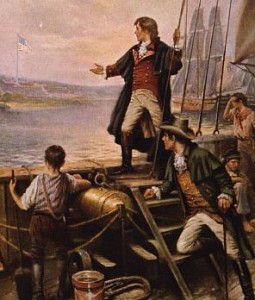
Francis Scott Key watches the bombardment of Fort McHenry in this painting by Percy Moran. (Library of Congress)
Watching it all was Francis Scott Key, a Washington lawyer who was in town to negotiate the release of a prisoner held on a British warship. Detained on that ship during the shelling, he wrote a poem expressing his elation to see that the fort survived. What he first called “The Defense of Fort McHenry,” soon became universally known as “The Star-Spangled Banner.”
The word “ramparts,” which I asked you to remember, shows up in Key’s poem:
The bombs burst in midair “o’er the ramparts we watch’d,” he wrote, and a miraculous visage of “broad stripes and bright stars” of the U.S. flag appeared at dawn, still “gallantly streaming” over Fort McHenry. More than a century later, in 1931, the U.S. Congress chose Key’s patriotic verses, sung to the melody of an old English drinking song, as the nation’s anthem.
It’s uncertain, these many years later, where the British Navy went after it withdrew in disappointment from Baltimore. It never attacked another U.S. city in force.
Perhaps it was because things were going poorly for the erstwhile invaders elsewhere.
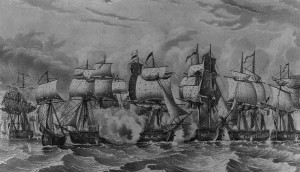
British and American warships fought at close quarters in the Battle of Lake Erie in 1813. (Library of Congress)
Commanders of outmanned American fleets — Commodore Oliver Hazard Perry most conspicuously — had already seized control of the Great Lakes. Just 28 years old at the outset of a raging battle for control of Lake Erie, Perry began the confrontation with the vow, “If victory is to be gained, I will gain it,” and ended it with an even more enduring proclamation:
“We have met the enemy, and they are ours.” His triumph marked the first time in history that a British naval squadron had surrendered and lost every ship to capture.
Elsewhere, two future presidents helped save the day for the Americans.
William Henry Harrison, the governor of Indiana Territory, commanded U.S. forces in the Northwest Territory. His fiercest opponents were not the British but Shawnee Indian forces under the brothers Tenskwatawa — known as “the Prophet” — and Tecumseh. Already a hero called “Old Tippecanoe” for the river on which his men routed attacking Indians at the outset of the war, Harrison led the Americans to victory at the Battle of Thames in Upper Canada. In it, Tecumseh, fighting alongside the British, was killed. Tenskwatawa escaped and survived the war. He would help relocate the defeated Shawnees to reservations near what is now Kansas City, Missouri.
The coup de grace for the British was delivered by “Old Hickory,” Andrew Jackson. Seems like a lot of our military heroes are “Old” something-or-other, no matter their age. Jackson was a backwoods lawyer from Tennessee who led a motley coalition of Army troops, fellow frontiersmen, Native American allies, and rascally pirates — including Jean Lafitte, whom you may have heard of. Near the port city of New Orleans on the Mississippi River in Louisiana, they confronted, and defeated, the largest and most determined British force of the war.
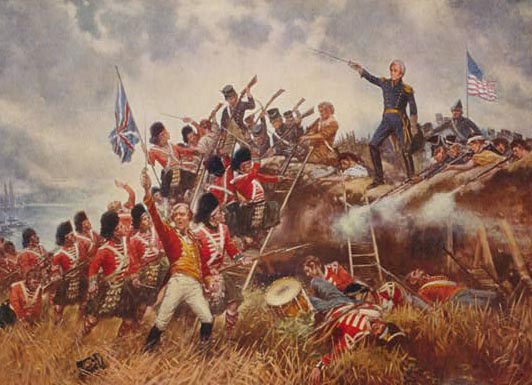
Another Percy Moran painting, this time an idealized look at Andrew Jackson's commanding presence at the Battle of New Orleans. (Library of Congress)
This victory enhanced Jackson’s already-formidable reputation as a fighter. He rode his fame as “the Hero of New Orleans” into politics and the U.S. presidency.
Unbeknownst to Jackson and the others on the bloody battlefield, a peace treaty, ending the war, had been drafted in Ghent, Belgium. It would be signed shortly after the British surrendered in New Orleans.
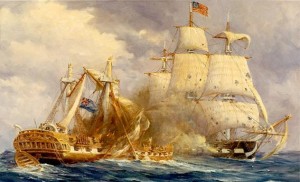
The U.S.S. Constitution pummels the British Guerriere in this painting by Anton Otto Fischer. (U.S. Naval Historical Center)
There had been one other notable American achievement— 2½ years earlier at sea — when incessant cannon fire from the U.S. frigate Constitution battered the British vessel Guerriere into submission off New York City.
Constitution, in turn, withstood enemy fire so well and miraculously that she entered seafaring lore as “Old Ironsides.” This and other surprising American victories at sea lifted the U.S. Navy into the top echelon of the world’s fighting forces.
So the British, who’d hoped to repossess their former American colonies, left empty-handed. The British Navy thereafter kept its hands off U.S. ships and sailors. Indian tribes’ hopes of independence — perhaps even some official nationhood — were dashed.
And the independence of the United States of America, declared more than a generation earlier, was assured.
In that sense at least, the famed historian Richard Hofstadter is selling the War of 1812 short when he calls it “a ludicrous and unnecessary war.”
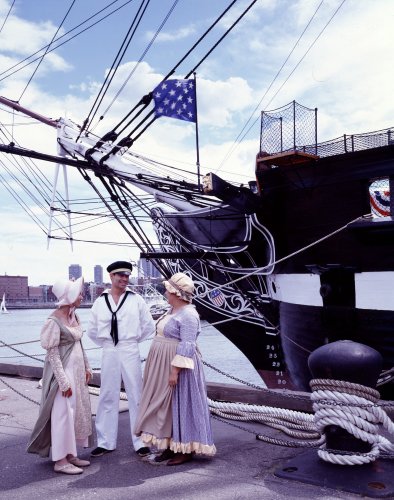
Ted's Wild Words
These are a few words from this posting that you may not know. Each time, I'll tell you a little about them and also place them into a cumulative archive of "Ted's Wild Words" in the right-hand column of the home page. Just click on it there, and if there's another word that you'd like me to explain, just ask!
Abdication. A resignation or renunciation of power. The word is most often used to describe the decision by a reigning monarch to voluntarily relinquish a throne.
Erstwhile. Former.
Impress. The common and best-understood meaning of this word involves trying to get others to admire and respect someone. Doing so makes a “good impression.” But the word also the action of forcing someone to serve in a nation’s armed forces, as when the British “impressed” U.S. merchant sailors prior to the War of 1812.
Misnomer. A name that is wrongly applied. Lead pencils, for instance, contain no lead, and tin foil has no tin.
Sally forth. To head out suddenly and briskly. The term goes back to medieval Europe, when a “sally port” was a small, easily defended doorway in a castle, from which raiding parties could quickly dart to combat sieges.

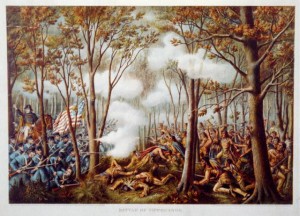
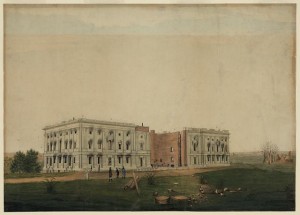

10 responses to “The (Long) Forgotten War”
Interesting article but I’m sorry but I must correct something. You write that “the British, who’d hoped to repossess their former American colonies, left empty-handed” giving the false impression that Britain was attempting to return the 13 Colonies to its rule during the War of 1812. In fact this was never a war aim of the British, a fact which is pretty obvious when you consider that even at the height of the war there was only ever a fraction of the force deployed which had tried, and failed, to keep the Colonies in British hands three decades earlier.
They were only fighting to keep Canada which they did. Also it’s of note that during the peace treaty negotiations they refused to agree to stop impressing sailors off American ships, that only stopped by coincidence in 1815 because the Napoleonic Wars ended and they found themselves with massive surplus manpower anyway.
Dear Jonathan,
You seem to know more about the War of 1812 than I do. You may be right, and at any rate, your contribution really advances our understanding of that war. Please keep reading and add any historical context that you think would be helpful any time I delve into American history.
Thanks,
Ted
I find most news coverage of the War of 1812 quite pathetic. The US defended a three-pronged military invasion of the world’s bully without an income tax, central bank, or military draft. Total federal expenditures for the entire government were less than 4% of GDP, an amazing fact. Currently, the federal government spends 25% of GDP in relative peacetime.
Never forget; James Madison followed the US Constitution to the letter in the War of 1812. It can be done, it has been done, and it can be done again.
Jonathan, since the British didn’t start the war, it is technically correct to say that they were only defending what they had in Canada. Closer to the truth, however, is that the British were interested in extending their hegemony in North America and blocking U.S. westward expansion. For that reason, they armed and made alliances with Native Americans in the old Northwest Territories, hoping to create a “neutral” buffer state in what is now America’s Midwest in which migrating Americans could not settle. It was one of the last demands they gave up in the negotiations leading to the Treaty of Ghent. There are subtleties that I learned while researching my forthcoming historical novel, “Madness: The War of 1812.” (www.madness1812.com)
Ted, I’m glad you mentioned the Constitution and Guerriere. Going through the article, I was at one point thinking you might leave that event out. That action was the first time in a very long time that a ship from another nation had beaten a British warship of equal rating in single ship action. What’s lost in history is the fact that Guerriere was really no match for Constitution. It had been built by the French and captured by the British and put into service. It was actually in pretty sorry shape and had little chance of beating Constitution. A more impressive victory was achieved several months later by Stephen Decatur in the USS United States, a sister ship of Old Ironsides, against the crack British frigate HMS Macedonian. The Macedonian’s captain, William Carden, had actually made a bet with Decatur before the war began that if their ships should happen to meet in combat, United States would be no match for the Macedonian. It turned out to be the other way around and Captain Carden owed Captain Decatur a beaver hat. Constitution achieved another impressive victory against HMS Java that left the British admiralty so stunned that three of their ships should be so soundly beaten by this upstart seafaring nation, that they forbade all their ships from engaging any American frigate in single ship action, and that they could only attack when they had a force in their favor. Even then, Constitution was later engaged simultaneously by the British frigates Levant and Cyane and beat them both.
Also lost in history is the Battle of Plattsburgh, where Commodore Thomas Macdonough aboard the USS Saratoga beat the much larger HMS Confiance by pure tactics and seamanship on Lake Champlain. It was this battle that helped push the British to negotiate an end to the war.
Steve,
Great information. It passed through my mind to determine why a British ship would have a French name. Should have guessed. I pretty much left the Canadian and Champlain campaigns out because my editor was already glowering at me about length. Keep reading and adding to the dialogue as you’ve done here.
Thanks,
Ted
Enjoyed your article. From the comments I see why there are so many history books written. The pin on your hat, Boy Scout?
Dear Tom
You’re right about the appetite for history. I used to have a voracious one, but like so many millions of Americans, I’m finding less time to read. And I can’t fully explain why. Maybe it’s because everything is buzzing around in bite sizes — tweets, texts, quick messages on one’s phone. The pace of life is blistering, and not really for good reason. There’s a blog topic there; maybe you can help me put some thoughts together.
As to the pin — no, it’s a fleur-de-lis, an homage to my five delightful years in New Orleans. People call it my “cowboy hat.” I correct them. It’s a “swamp hat,” though, truthfully, Louisiana’s swamps are a couple of hours away. And the French influence is mostly for tourists.
Thanks for writing,
Ted
What everyone fails to mention, is the founding fathers and original Americans fought a so called war of Independence not for Independence, at least not for everyone, but rather to UPHOLD slavery. Slavery was abhorent to the British, not allowed in Britian or on British soil, and many slaves tried to escape to British Columbia or Britan where they would immediately become free.
When the American’s became openly seditious and rebelious and waged a war against their government, Lord Dunmore, in charge of the British forces, issued a proclamation freeing all the slaves in the colonies. All of them. Well, the “American’s ” and founding fathers would have none of that, and waged a bitter war to hold onto and keep their slaves, the source of many of their fortunes. Remember, the founding fathers were the rich and well to do in America, that could afford to get elected and travel all the way to Washington to represent their colony. The poor frontiersman or trapper, such a thing was out of the question.
Many people think Lincoln and his Emancipation Proclamation, or what came after it, freed the slaves…. but really, it was just a rip of what Lord Dunmore had done 150 years earlier. It took a bloody civil war by the lower classes which leveled the playign field to finally do away with slavery.
That pyramid with the all seeing eye on it on the dollar bill.. not so much a masonic symbol, as a symbol of a country founded on massive land theft and slavery. What were the pyramids built with? Slave labor.
The real crime is that the early American’s rebelled against the criminal British rule, prisons, and court system, only to have it slickly all readopted and reinstituted right here with the corrupt Judiciary Act of 1789…. based upon… what else… the rotten British judicial system, ala Braveheart, that imposed the King and states will upon subjects in a fine grained way, after they had been conquered by bullies with guns.
When you get down to it, a state begins as nothing more than a bully family or clan waring to subjegate those around it, then it becomes a dynasty, then it starts putting on the trappings of civility as it buries itself deeper into the framework and takes over the issuing of money, building of armies, and expanding of borders.
Lord Dunmore’s Proclamation
http://en.wikipedia.org/wiki/Dunmore's_Proclamation
Dear Choppergirl,
Do you think Lord Dunsmore might have declared the slaves free not out of the goodness of his heart but to make things difficult for the colonists, just as as Abraham Lincoln “freed” the slaves (from a distance) during the U.S. Civil War? And if slavery was so abhorrent to the British, why did it exist in the British colonies anyway?
Ted